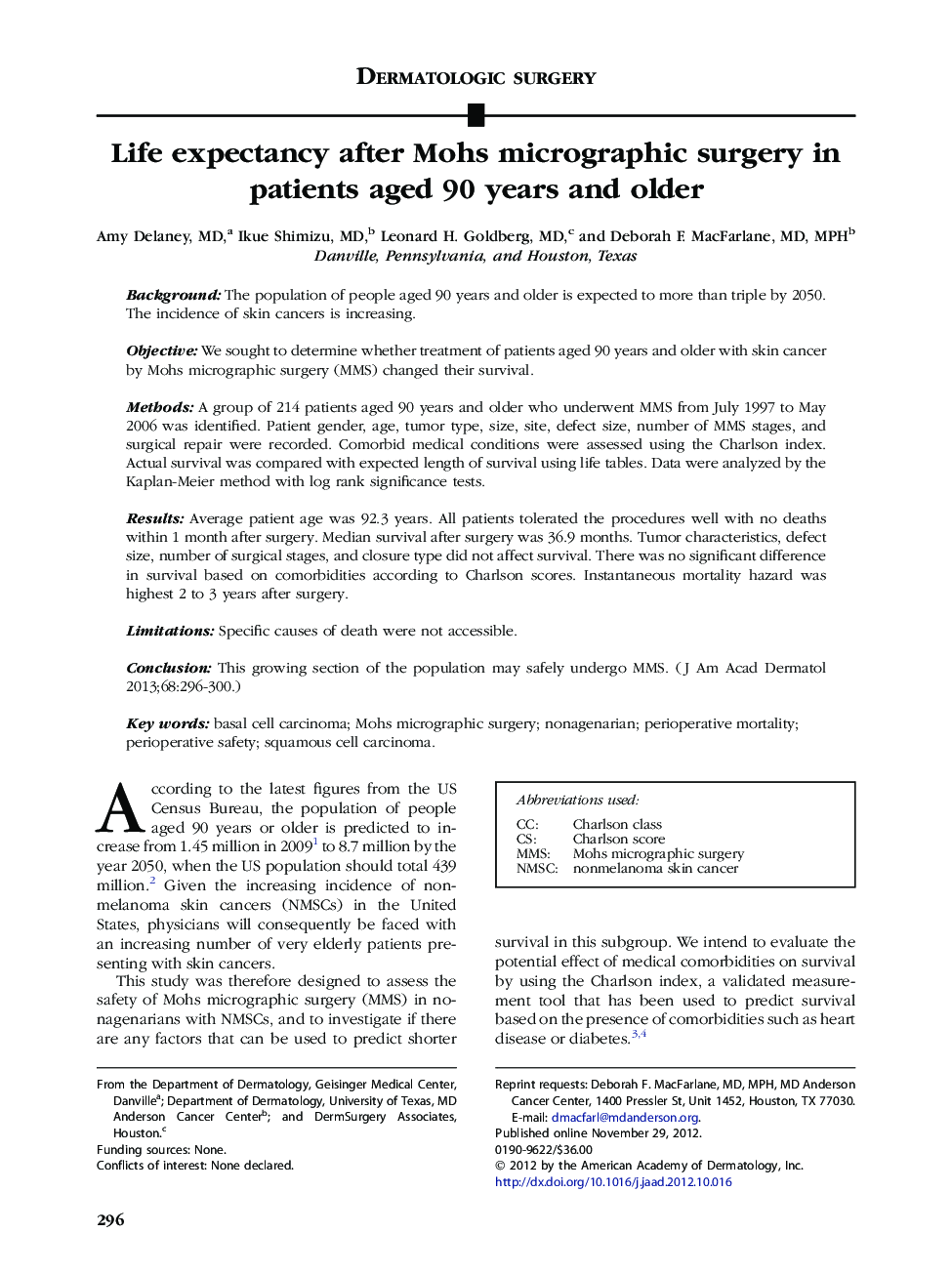| Article ID | Journal | Published Year | Pages | File Type |
|---|---|---|---|---|
| 3205641 | Journal of the American Academy of Dermatology | 2013 | 5 Pages |
BackgroundThe population of people aged 90 years and older is expected to more than triple by 2050. The incidence of skin cancers is increasing.ObjectiveWe sought to determine whether treatment of patients aged 90 years and older with skin cancer by Mohs micrographic surgery (MMS) changed their survival.MethodsA group of 214 patients aged 90 years and older who underwent MMS from July 1997 to May 2006 was identified. Patient gender, age, tumor type, size, site, defect size, number of MMS stages, and surgical repair were recorded. Comorbid medical conditions were assessed using the Charlson index. Actual survival was compared with expected length of survival using life tables. Data were analyzed by the Kaplan-Meier method with log rank significance tests.ResultsAverage patient age was 92.3 years. All patients tolerated the procedures well with no deaths within 1 month after surgery. Median survival after surgery was 36.9 months. Tumor characteristics, defect size, number of surgical stages, and closure type did not affect survival. There was no significant difference in survival based on comorbidities according to Charlson scores. Instantaneous mortality hazard was highest 2 to 3 years after surgery.LimitationsSpecific causes of death were not accessible.ConclusionThis growing section of the population may safely undergo MMS.
